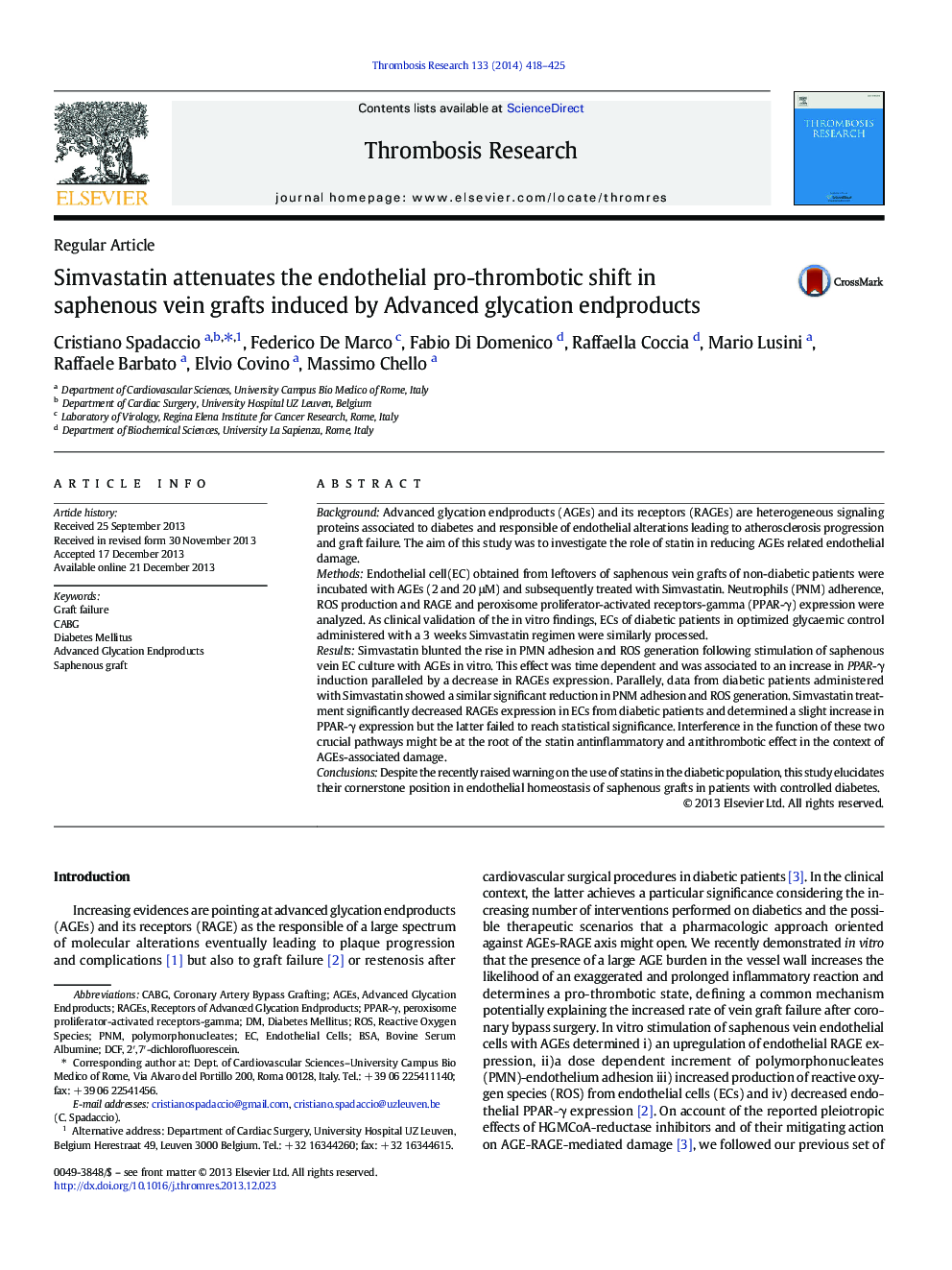| Article ID | Journal | Published Year | Pages | File Type |
|---|---|---|---|---|
| 6002424 | Thrombosis Research | 2014 | 8 Pages |
BackgroundAdvanced glycation endproducts (AGEs) and its receptors (RAGEs) are heterogeneous signaling proteins associated to diabetes and responsible of endothelial alterations leading to atherosclerosis progression and graft failure. The aim of this study was to investigate the role of statin in reducing AGEs related endothelial damage.MethodsEndothelial cell(EC) obtained from leftovers of saphenous vein grafts of non-diabetic patients were incubated with AGEs (2 and 20 μM) and subsequently treated with Simvastatin. Neutrophils (PNM) adherence, ROS production and RAGE and peroxisome proliferator-activated receptors-gamma (PPAR-γ) expression were analyzed. As clinical validation of the in vitro findings, ECs of diabetic patients in optimized glycaemic control administered with a 3 weeks Simvastatin regimen were similarly processed.ResultsSimvastatin blunted the rise in PMN adhesion and ROS generation following stimulation of saphenous vein EC culture with AGEs in vitro. This effect was time dependent and was associated to an increase in PPAR-γ induction paralleled by a decrease in RAGEs expression. Parallely, data from diabetic patients administered with Simvastatin showed a similar significant reduction in PNM adhesion and ROS generation. Simvastatin treatment significantly decreased RAGEs expression in ECs from diabetic patients and determined a slight increase in PPAR-γ expression but the latter failed to reach statistical significance. Interference in the function of these two crucial pathways might be at the root of the statin antinflammatory and antithrombotic effect in the context of AGEs-associated damage.ConclusionsDespite the recently raised warning on the use of statins in the diabetic population, this study elucidates their cornerstone position in endothelial homeostasis of saphenous grafts in patients with controlled diabetes.
